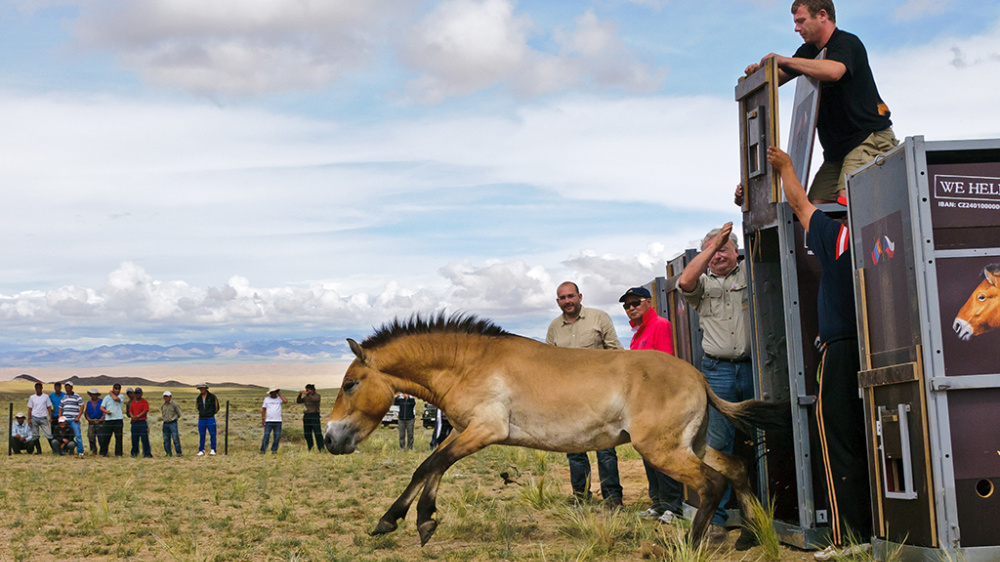Mission of the zoo
Zoos today operate in a world where the species diversity of natural ecosystems, or biodiversity, is increasingly under threat. It is these institutions that can affect the whole range of conservation activities, from research to ex situ conservation (including breeding of endangered species and educational activities) to participation in ‘in situ’ projects in the field.

Návrat divokých koní, foto: Jana Ptačinská Jirátová
Education and training
Every year, more than 600 million visitors of all ages and interests come to zoos around the world. Prague Zoo, together with Prague Castle, is unequivocally the most visited institution in the Czech Republic. There are almost 1.5 million visitors a year. This represents a great challenge as well as a commitment, especially in the field of education.
Zoo Prague has an impact on the general public through its educational and training activities. Thanks to the invaluable potential of seeing or interacting with live animals, it shapes the opinions and attitudes of visitors and influences their values and attitudes towards the protection of animals and the environment.
Keeping animals
Prague Zoo is a modern institution that creates the best possible conditions for the animals kept there. This is done both by the concept and design of enclosures and quarters, as well as by forming single- or multi-species groups. Visitors can thus get an idea of the animals' lives and their relationship to their environment, and the animals can develop a wide range of natural behavior.
Ex situ protection
Prague Zoo has long been involved in the protection of ex situ animals. It participates in the creation of backup populations of species that are immediately endangered in nature. Individuals bred in human care can be reintroduced, in the future, as founders of new wild populations in the original habitat of the species.
In situ protection
Prague Zoo is actively engaged in in situ projects aimed at protecting animals directly in their natural habitat. It is involved in the reintroduction of endangered species back into the wild and provides methodological and material assistance in areas where these species live or where efforts are being made to return them.
Programs include the Przewalski's horse, the western lowland gorilla, the Indian gharial, the bison, the Tasmanian devil, the Egyptian vulture, the dice snake, the European ground squirrel, the crucian carp, the eastern baton blue and some others.








